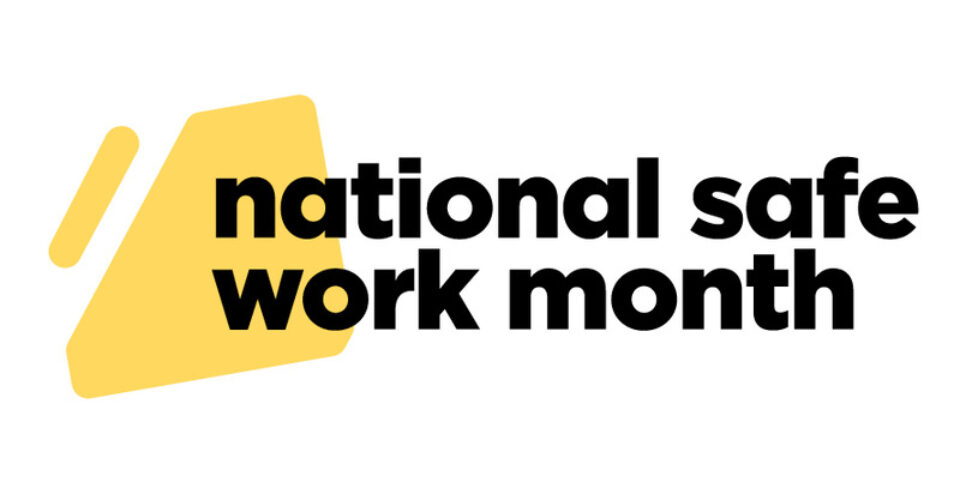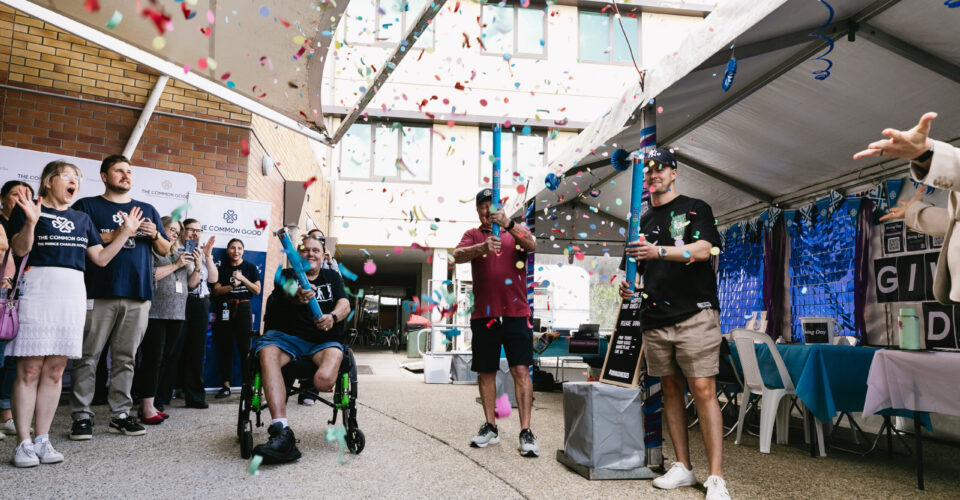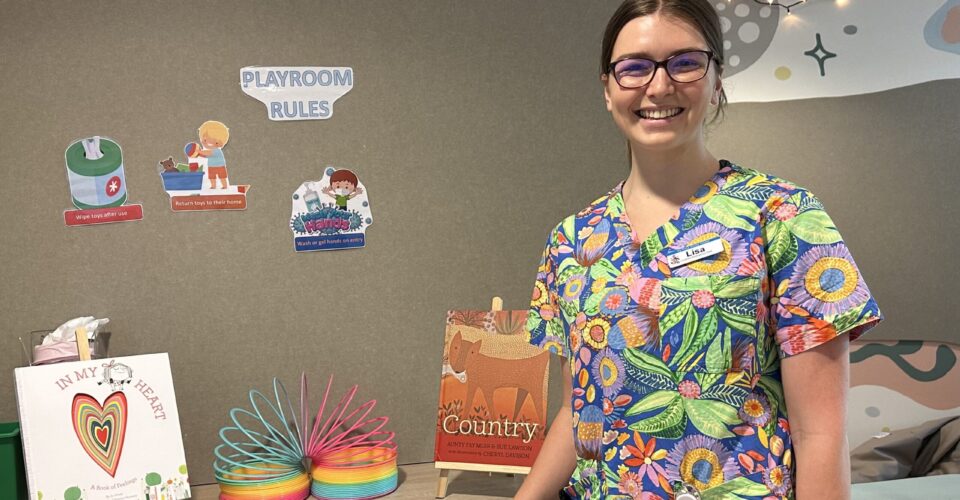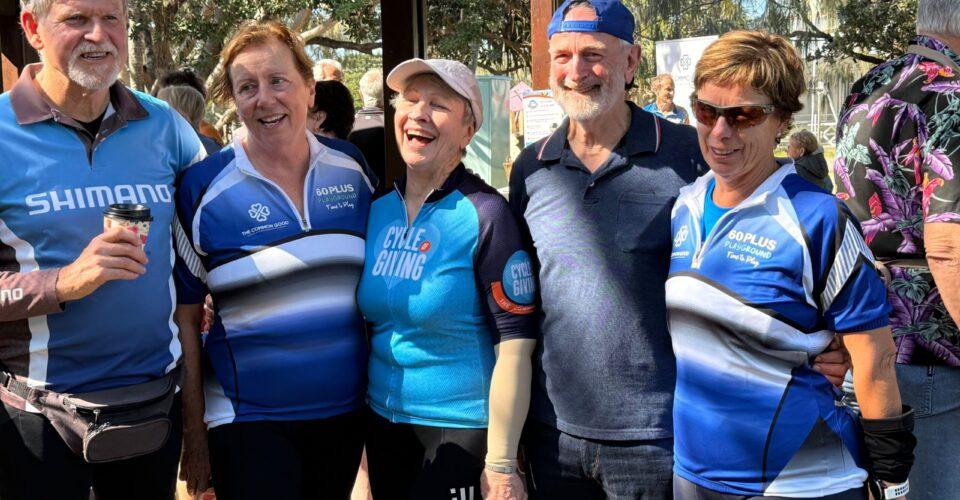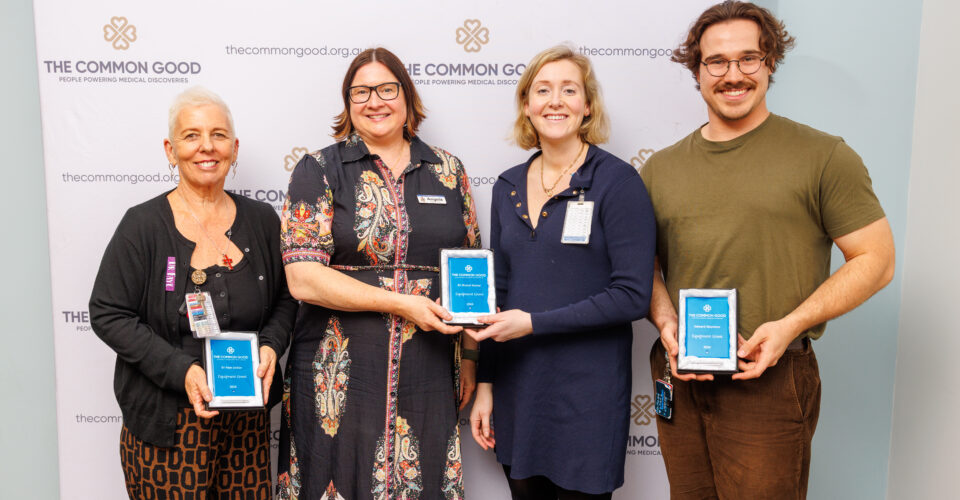Every October, Safe Work Australia – the national policy agency responsible for WHS and workers’ compensation arrangements – runs National Safe Work Month.
This Australia-wide campaign, launched in 2009, raises awareness of Workplace Health and Safety and provides workplaces around the country with guidance and resources to host their own events.
About National Safe Work Month 2025
In 2025, the theme is safety: every job, every day, encouraging all workplaces to prioritise safety every day, regardless of occupation, industry, location, and size.
- Week 1: identify hazards
- Week 2: assess risks
- Week 3: control risks
- Week 4: review controls
Click here to learn more about National Safe Work Month and to view Safe Work Australia’s Resources.
Why Occupational Lung Disease Research Matters
While there are countless hazards that workers across Australia face every day, researchers supported through the Tradie Health Institute initiative, are investigating improved detection methods and treatments for occupational lung diseases.
The Tradie Health Institute is an initiative of The Prince Charles Hospital Foundation. It is dedicated to improving health outcomes for Australia’s trade, mining, and agricultural workforce.
Focusing initially on occupational lung disease – specifically the early detection and treatment of silicosis – this initiative aims to expand its research scope over time to address other critical health challenges impacting these essential industries.
This research, supported by The Prince Charles Hospital Foundation, leverages the expertise of The Prince Charles Hospital, renowned as a national leader in lung health and home to one of Australia’s largest cardiothoracic units.
Notifiable dust lung diseases recorded during 2024-25
Recently, the sixth annual report of the Queensland Health Notifiable Dust Lung Disease Register (NDLD Register) was prepared. The report showed 292 workers with a total of 310 confirmed notifiable dust lung diseases recorded in the NDLD Register during 2024-25. (Table below)
- 275 were diagnosed with one disease,
- 16 were diagnosed with 2 diseases and
- One was diagnosed with 3 diseases
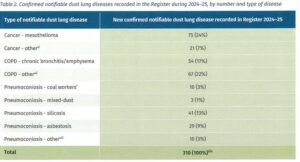
The report reads: “Age 60-79 years was the most frequently reported age group of workers at the time of diagnosis, accounting for 183 (63%) of the 292 workers with new notifiable dust lung disease. The over-representation of older age groups may be explained by the latency of dust lung diseases (i.e. the time lag between occupational exposure to the inorganic dust and when the disease is diagnosed).”
Corporate Partners Driving Safer Workplaces
Through the support of corporate partners including CPB Contractors, HIA Charitable Foundation, Besix Watpac, and more, the Tradie Health Institute initiative has been able to support a dedicated research position to enable continued progress toward developing cost-effective, portable screening tools using the PExA (Particles in Exhaled Air) machine, and the ongoing loan of this innovative piece of equipment.
PExA (Particles in Exhaled Air) Machine
Currently, a pioneering research endeavour is being supported by The Prince Charles Hospital Foundation and its initiative, the Tradie Health Institute, with researchers having access to cutting-edge equipment from Sweden, called the PExA (Particles in Exhaled Air) machine.
This is the first time this unique technology has been accessible to a lab in Australia, and this work could potentially revolutionise lung research in Australia and beyond.
Dr. Simon Apte, Chief Scientist at the Queensland Lung Transplant Service Research Centre, explained, “PExA is particularly powerful because it can capture particles from the distal airways without the need for invasive procedures. This offers exciting new possibilities for early diagnosis, disease monitoring, and tracking treatment response. Importantly, PExA also has the potential to replace the routine but invasive procedure of bronchoalveolar lavage (BAL) in selected patients, which would be of great clinical value at The Prince Charles Hospital.”
In brief, the researchers and clinicians plan to:
- make a world-first comparison between matched BAL samples and PExA thereby giving the first proof of principle that PExA is truly a viable alternative for BAL.
- study PExA samples from silicosis patients and healthy individuals. The objective is to determine if PExA can be developed into a minimally invasive diagnostic tool for silicosis.
“Our goal to compare matched BAL and PExA is a little logistically complex as it requires coordination of the transplant team, scientists, and the willing participation of transplant recipients, and interstitial lung disease patients (who would normally have a BAL), to attend the hospital in the days before their BAL to provide a PExA sample. Nevertheless, we think it is worth the effort to really test the capabilities of the PExA machine,” said Dr Apte.
Dr Rebekah Engel, The Prince Charles Hospital Foundation’s Research Manager says, “Our ultimate goal is to support research that enables portable, on-site testing units – making early, accessible lung screening a reality for high-risk industries.”
How to Get Involved
To find out more about how your organisation can support pioneering medical research initiatives that support workforce health and wellbeing, contact info@tpchfoundation.org.au or donate now.
